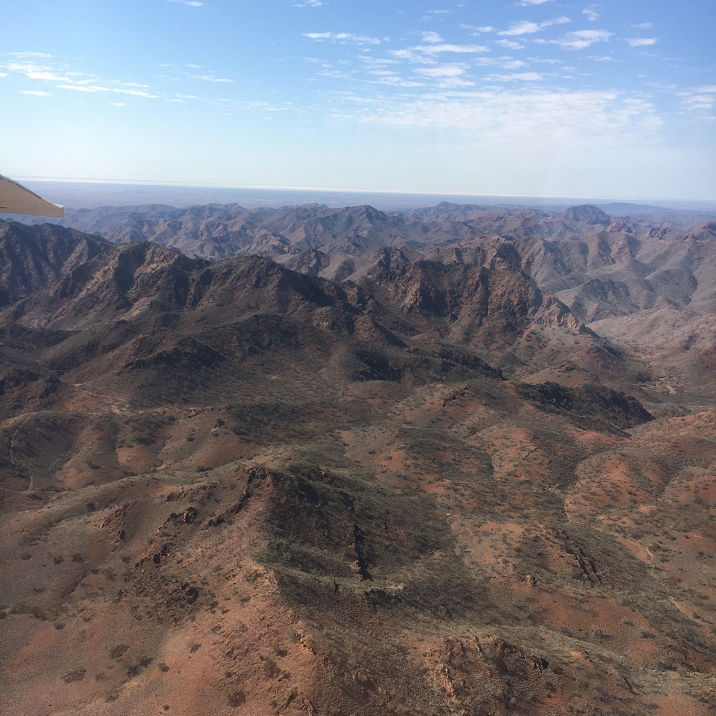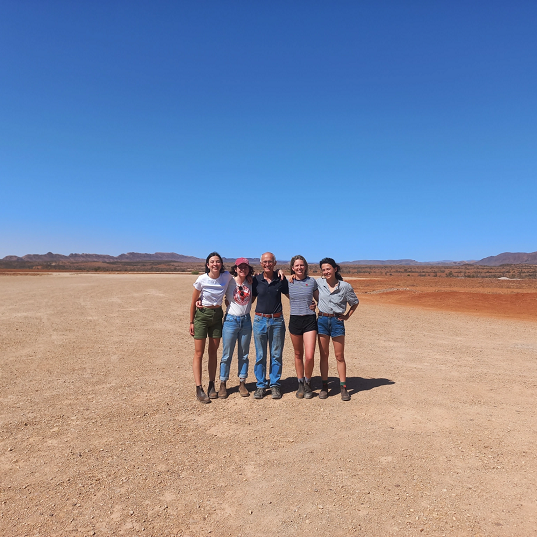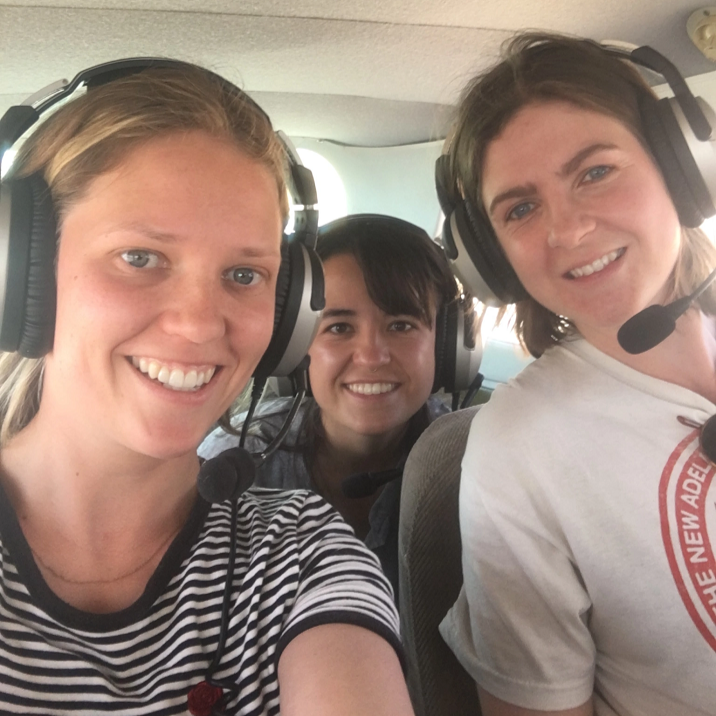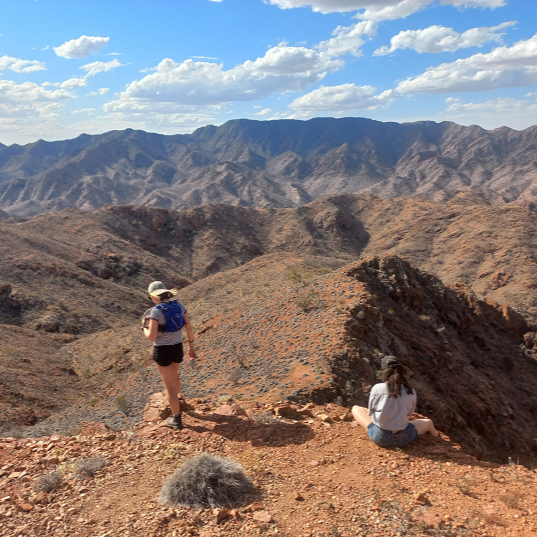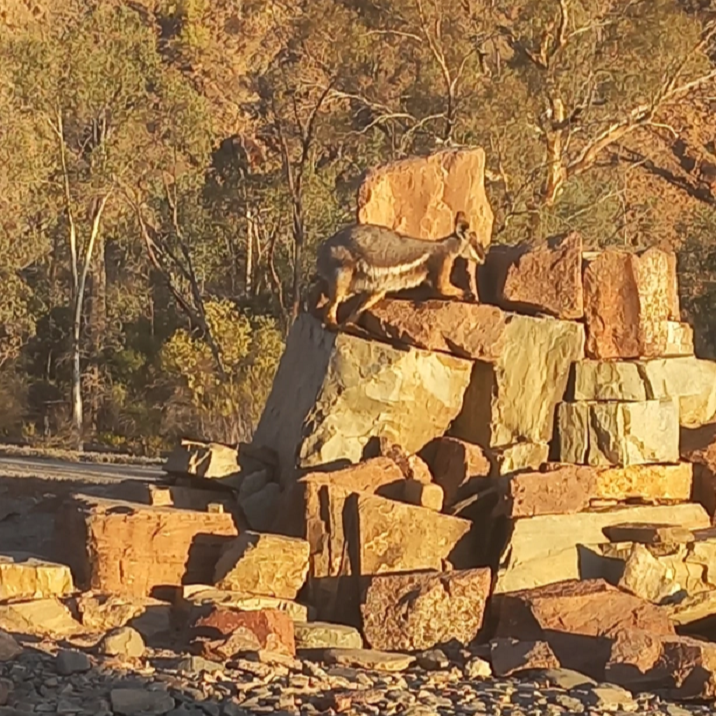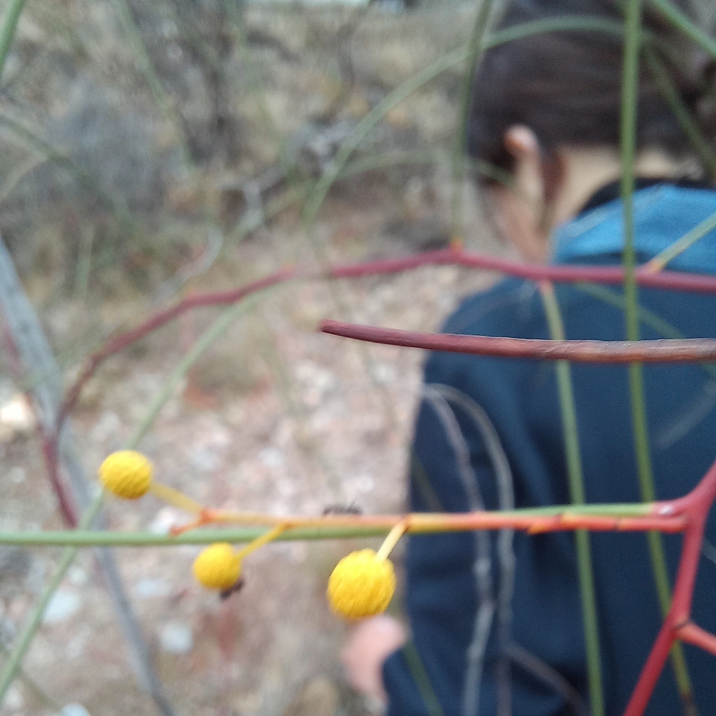Into The Ocean
Arriving home to a place you have never been, Arkaroola

Looking out across the valley, mountains in the distance, carved in perfect formations by the hands of the earth. The
jagged edges and indents with patterns of colours giving away its history. I felt small, who am I in comparison to the
beauty here? One of many who have passed through, does everyone else feel the awe? the inexplicable belonging? It has
taken millions of years to create this, how blessed I am to be at this place, in this moment, to witness it.
We drove into Arkaroola on a dusty and overcast afternoon. It had been over two hours since we had passed a town or
saw any people and it felt like the road would never end. We stopped to admire some wedge tail eagles when another car
passed by, this was the first sign that we were close to our destination. Out of seemingly nowhere loomed Arkaroola
station, we were warmly welcomed at reception before being directed down another track to our sleeping quarters. Opening
the front door of our bunk house I beheld the view of Arkaroola that had captivated so many others before me, after a
good nights rest, I was itching to explore.
The reason we had ventured to Arkaroola in the first place was all in the name of science. Dr. Colette Blyth, a colleague
of mine and my best mate (see the blog I did about her), was conducting research on an Australian native plant, the spidery
wattle or Acacia araneosa. Severe drought has caused significant die off of this species and forced retraction of it
range to only a small population at the far north of the property. Our job was simple, collect samples of this species
to take home for analysis and determine its genetic diversity. Was it hybridising with another species? was it a truly
separate species? had it inbred too much during the drought that it did not contain enough genetic diversity to adapt
to climate change? I did not realise that working to save this little Acacia would turn into one of the greatest experiences
of my life.
Arkaroola has had a long history with scientific endeavours and is a keen supporter of scientific research. Reginald
Sprigg and his wife Griselda, purchased Arkaroola station back in 1967 and established it as a wildlife sanctuary in 1969.
Today, the Sprigg family continue to watch over Arkaroola with Reg's son Doug, maintaining the sanctuary and encouraging
scientific endeavours, including the establishment of an education and research foundation. It is with Doug that our
Arkaroola journey began, we sat down with him to discuss where he had seen Acacia araneosa on the property. From here
we ventured north in search for the elusive plant.
Before we set off on the wattle hunt we had a little exploration to do. Our first Arkaroola experience was the
observatory. Arkaroola boasts one of the best star gazing spots in the world and there was not doubt as to why. With
Doug's advanced knowledge of the stars and his very fancy telescope set up, we got to look up close to Jupiter and the
red storm, see the rings of Saturn and even venture further out to see a Nebula. I had never had a space experience such
as this. Never before had I seen a night sky so clear and so full of stars. This missing interaction with our natural world
that we no longer get due to living in cities is a real shame. It is humbling to realise your place in the expansive
universe and serves as a clear reminder of how precious our earth is.
Stepping back onto the ground we also spent a day out on the infamous Arkaroola 4WD tour which is 4 hours of hard core
4WDing in an open back ute, getting up close and personal with the entire sanctuary. There was time to perch on the top
of Mt Painter and take in the views which was truly magical. It is hard to put into words what exactly it felt like but
it didnt even feel like being on planet earth. It was surreal and more like a scene out of a science fiction film. We
were even more fortunate on this trip and got to take a scenic plane flight around Arkaroola and out onto lake frome.
I have never experienced anything like this before in my life and likely never will again, it truly was so special and
was made even better by the fact Doug Sprigg was the one flying the plane.
Back to the science, and while we had some luck collecting samples of Acacia araneosa overall it was rather depressing.
Most of the larger trees had all died out from the drought and so collections were few and far between, that is, until
the last day of collecting. One of our team wandered away from the location we were sampling only to find several seedlings
growing! Upon sampling these seedlings we then found more, we walked further and found more, we then found some adult
trees (healthy ones), then some more seedlings! It turns out there was a remnant population that had not only survived
the drought but had bounced back with new recruits growing. This was a brilliant find for the team and very encouraging
to the survival of the species as a whole. To finish this wondrous day off it rained at Arkaroola, rain in central
Australia is a truly special experience. The wildlife comes alive with the rain and we were lucky enough to see some
yellow ‑footed rock wallabies.
This blog barely scratches the surface of the impressiveness of Arkaroola, it is truly special and I am so grateful
that the Sprigg family dedicated so much time and resources into maintaining this sanctuary. The legacy of Reg Sprigg
endures.
